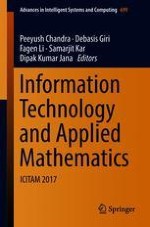This book discusses recent advances and contemporary research in the field of cryptography, security, mathematics and statistics, and their applications in computing and information technology. Mainly focusing on mathematics and applications of mathematics in computer science and information technology, it includes contributions from eminent international scientists, researchers, and scholars. The book helps researchers update their knowledge of cryptography, security, algebra, frame theory, optimizations, stochastic processes, compressive sensing, functional analysis, and complex variables.
